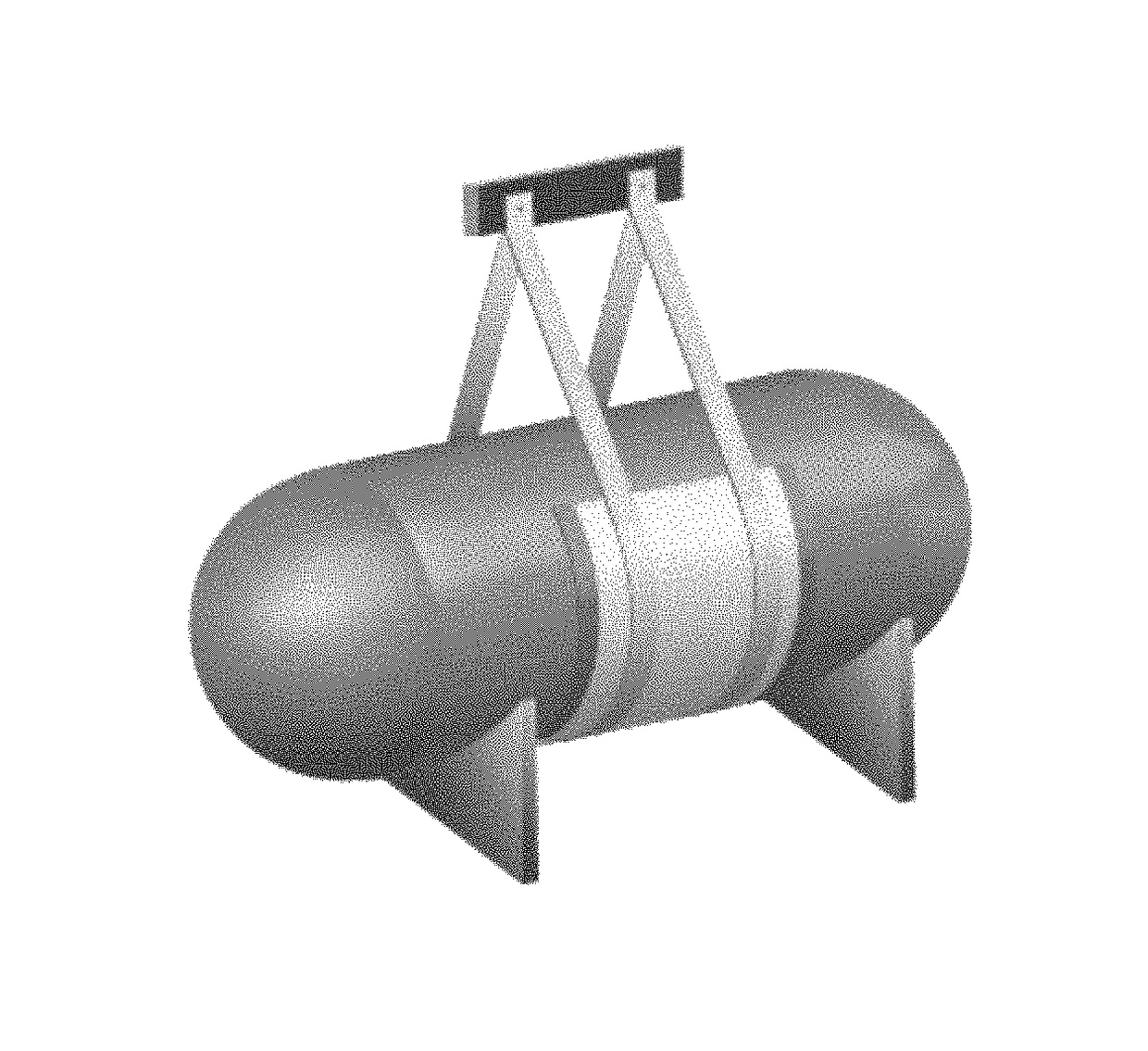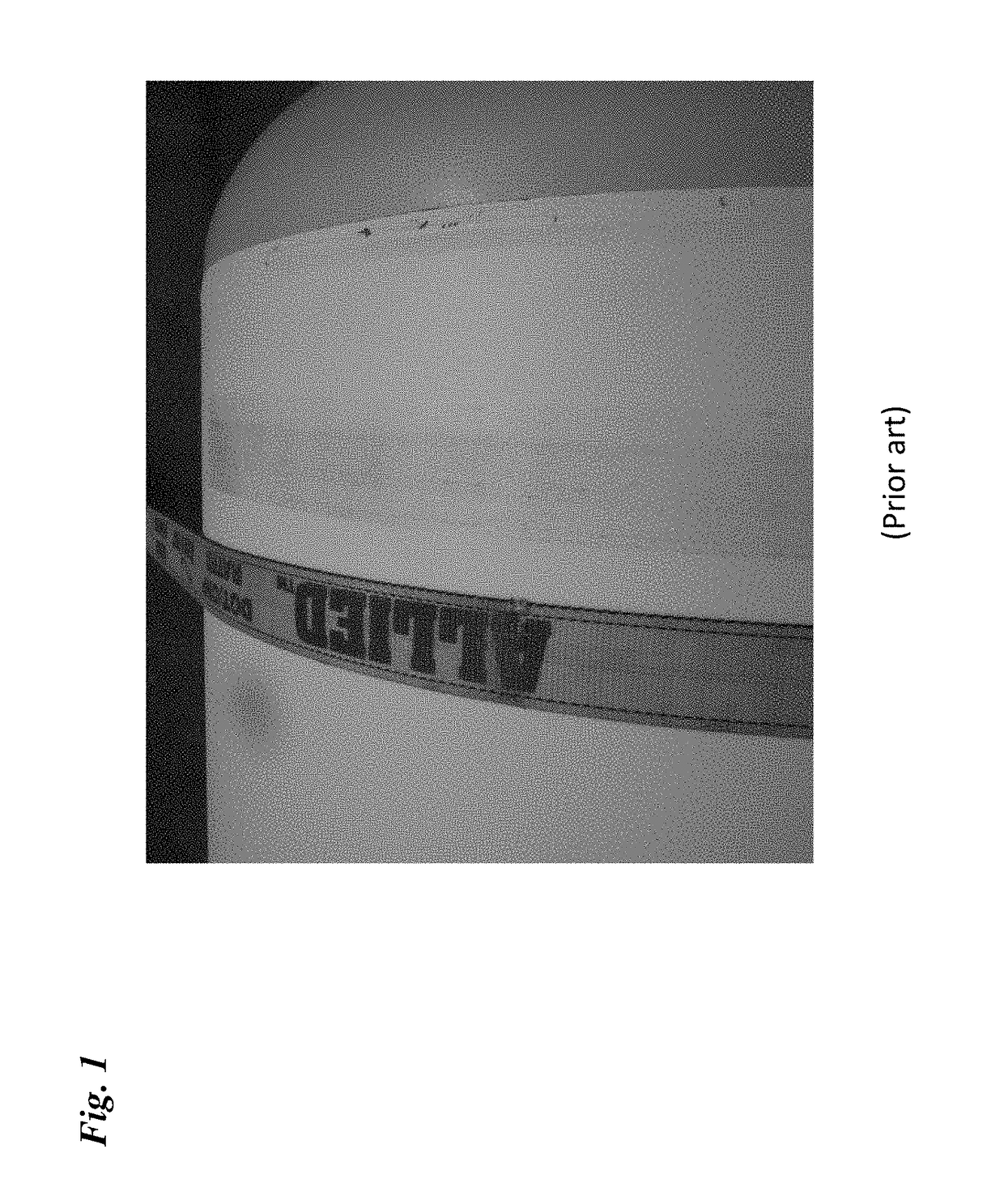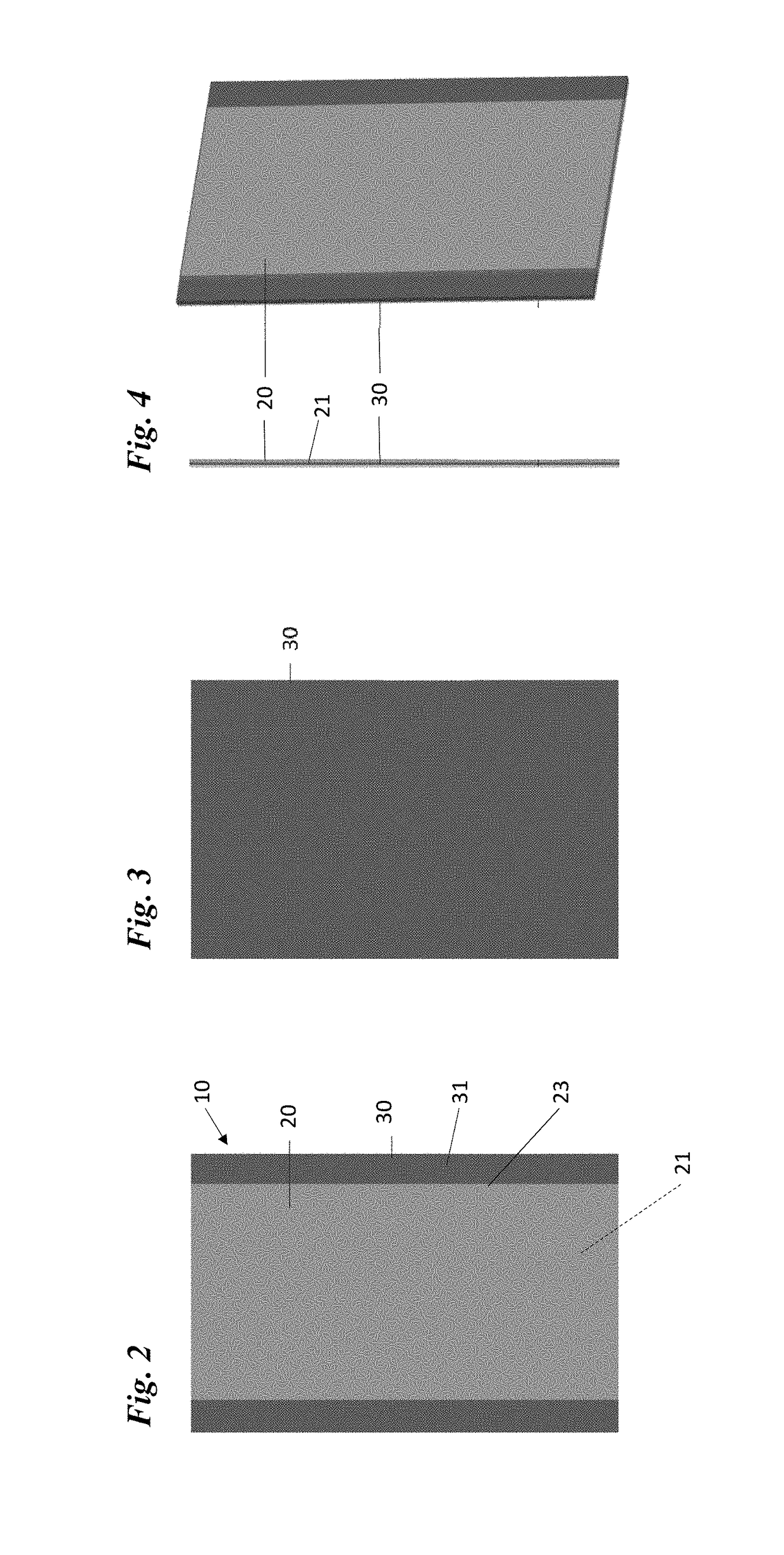Protective device useful in transporting and lifting objects having easily damaged surfaces, including delicate, coated, painted, and polished surfaces
a protective device and surface technology, applied in the direction of load-engaging elements, travelling carriers, travelling articles, etc., can solve the problems of easy degree of damage to the surface of coated surfaces, so as to prevent damage to the surface, reduce the degree of compression, and the effect of greater rigidity
- Summary
- Abstract
- Description
- Claims
- Application Information
AI Technical Summary
Benefits of technology
Problems solved by technology
Method used
Image
Examples
Embodiment Construction
[0048]Referring to FIGS. 2 to 9, a preferred embodiment of a protective device 10 is constructed using a rigid or semi-rigid, flexible material as a first (outermost) layer 20 and a semi-soft flexible material optionally coated or infused with a non-stick substance as a second (innermost) layer 30. The device 10 is sized so that covers at least a portion of a coated object's surface that would normally come into contact with a rigging line. The protective device 10 when in use sits between that surface and rigging line and distributes the load of the line when in tension so that no telegraphing of the line occurs on the coated surface.
[0049]The outer layer 30 has a different coefficient of friction than the inner layer 30 such that a rigging line when being tightened about the device can self-center over the outer layer 20 of the device 10 while at the same time the inner layer 30 prevents the device from moving longitudinally or laterally over the painted or coated substrate of the...
PUM
 Login to View More
Login to View More Abstract
Description
Claims
Application Information
 Login to View More
Login to View More - R&D
- Intellectual Property
- Life Sciences
- Materials
- Tech Scout
- Unparalleled Data Quality
- Higher Quality Content
- 60% Fewer Hallucinations
Browse by: Latest US Patents, China's latest patents, Technical Efficacy Thesaurus, Application Domain, Technology Topic, Popular Technical Reports.
© 2025 PatSnap. All rights reserved.Legal|Privacy policy|Modern Slavery Act Transparency Statement|Sitemap|About US| Contact US: help@patsnap.com



